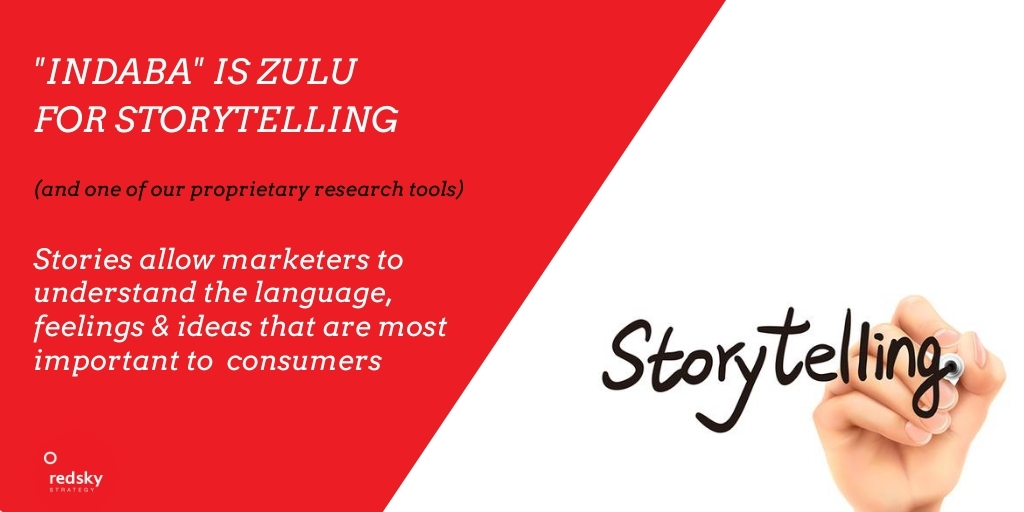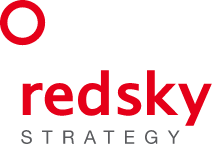News
Indaba is Zulu for Storytelling

By Kimberly Orton, Managing Director
You’ve heard a lot about storytelling in the past, and maybe you’ve even put significant thought into why it’s important. Maybe you read our recent post “Storytelling is not just a Buzzword.” If you did, then you know that at RedSky Strategy we leverage storytelling in everything we do, including as part of a quantitative research methodology called Indaba. Indaba helps us find the most compelling or relevant stories for your brands to gain valuable insights. But before we dive into the nuances of our Indaba methodology, I’ll start with why we use storytelling as a research device in the first place.
I’m a natural born storyteller. I love telling stories. Stories are sticky, meaning they have staying power. A story can be happy, sad, funny or emotional, but no matter what kind of emotion, they tend to stick in our memory or subconscious. The reason stories stick and we remember them, is because of the three key principles about storytelling.
1. Stories are simple.
Short stories naturally condense complex thoughts into simple elements that are accessible and intuitively understood by everyone.
2. Stories are a natural connector.
They stimulate emotion, empathy and the imagination.
3. Stories are illuminating.
Stories are a window into peoples’ world. They are a reflection of daily life experiences, injected with emotions – intimate and insightful.
Let me share a simple example. If I were to ask you whether or not you’ve ever lost your luggage on a trip (a basic question in traditional research) you can easily answer yes or no. That ends the discussion and shuts down what might be the most informative or meaningful part of that discussion.
However, if I asked you to share a short story about losing luggage, you might tell me about how losing that luggage made you feel, about the chaos that ensued for you, about the difficulty of buying new clothes for your holiday. Maybe you’d comment on your overwhelming frustration with the airlines. You might tell me about who else was on the trip and where you went. Whether the trip ended in triumph or disaster. And most importantly, you’d tell me if you ever saw your luggage again.
The difference is when you tell me a story, it’s more meaningful, lasting and sticky. We know much more colorful detail about your loss of luggage.
That’s why we use Indaba as a key research tool. Indaba allows us to gain qualitative depth of exploration in a quantitative survey. Instead of asking survey respondents how they feel about a certain subject, we instead ask them to tell us a story about the subject. This allows marketers to better understand the language, the feelings and the ideas that are most important and relevant to their consumers when it comes to their subject areas. The approach works in both B2C and B2B contexts.
The stories we unearth can become the basis for positioning, messaging, promotions, or a new product launch. They help inform our understanding of the consumer and our brand story. Essentially, stories serve as the insights that your brand needs to succeed.
We’d love to help you flesh out the stories most critical to your brand. If you’d like to learn more about the Indaba methodology or how RedSky can leverage storytelling research modalities for your brand, give us a call. We’d love to help you tell your story.
